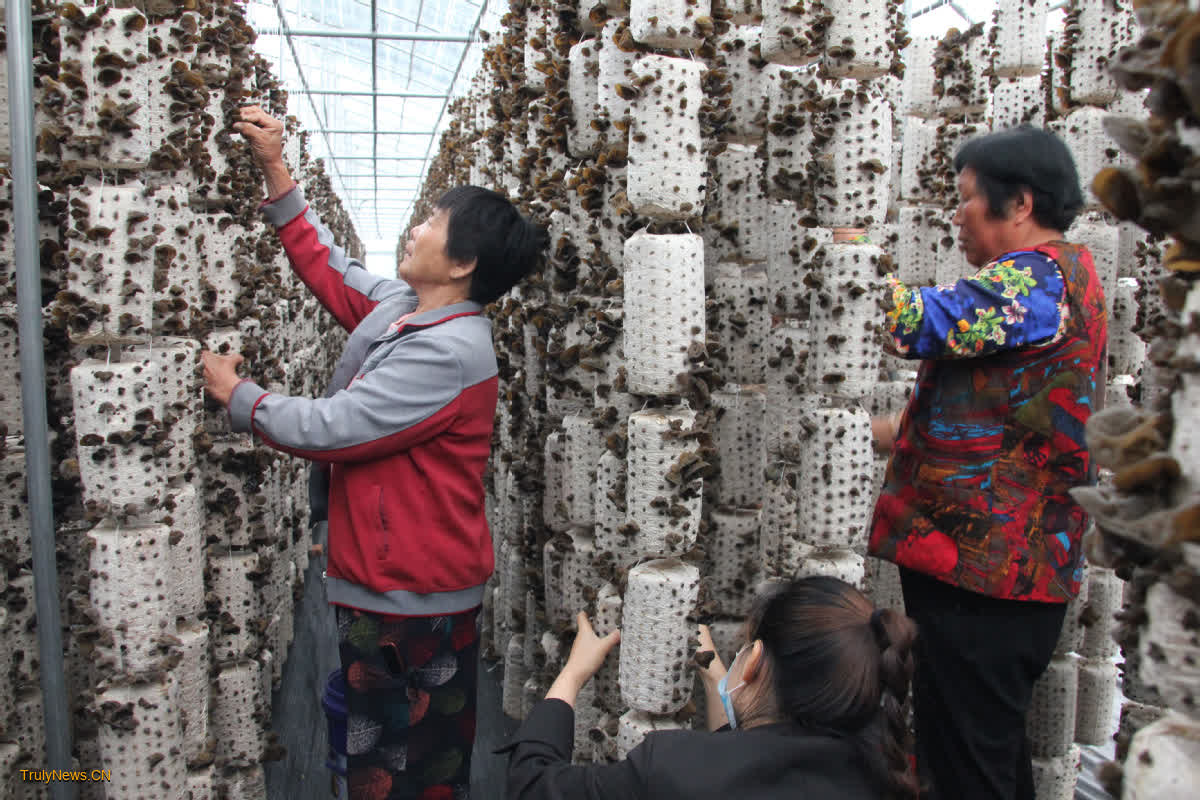
In Liangshan county of East China’s Shandong province, high-quality auto parts are transported on a production line of specialized vehicle manufacturer Shandong Shuyue Vehicle Co Ltd, which plans to increase its output this year by constructing a new manufacturing park.
Entailing an investment of 500 million yuan ($68.8 million), the manufacturing park is expected to generate 2 billion yuan in sales per year.
Liangshan, which is home to multiple vehicle manufacturers, now produces 350,000 specialized vehicles annually. Its products are exported to various regions, including the Middle East and Southeast Asia.
In fact, this is not the only key sector in Liangshan. Over the past few years, the county has spared no effort to foster specialty industries, from rare-earth elements to green goods, in order to construct a modern industrial system.
The education services sector, for example, has also become a resounding calling card of Liangshan county.
Liu Gang, head of the county government, said Liangshan has been providing education services for more than 30 years. It has held the China (Liangshan) Conference on the Development of Education and Book Information Industry for four consecutive years.
According to Liu, 120 education services companies — 92 of which focus on book design and distribution — are currently located in Liangshan, offering more than 20,000 kinds of products.
Meanwhile, Liangshan has boosted the local logistics industry by developing three major modes of transport — road, rail and sea.
The county has significantly contributed to China’s coal transportation and could help save at least 1 trillion yuan in transportation costs each year.
Currently, Liangshan Port alone has an annual throughput of 20 million metric tons and the county plans to further motivate innovation in the logistics sector.
Besides, Liangshan has fostered large-scale fruit and vegetable farming by setting up complete industrial chains and developing renowned brands based on local characteristics.
Specifically, the county has promoted the standardized development of leek farming by building agricultural parks, distribution centers and cold storage warehouses.
Efforts have also been made to effectively allocate resources for edible mushroom farming and construct more than 100 high-standard greenhouses.
Currently, Liangshan grows a wide range of edible mushrooms such as king oysters and seafood mushrooms, and the mushroom spawn bags produced here have been sold to more than 10 provinces across the country.
With specialty industries embracing rapid growth, the local government has given full play to its increased income and carried out a series of projects to improve people’s livelihoods.
The government said continuous efforts have been made to provide better educational resources for local students.
For instance, Liangshan just completed construction of a new primary school equipped with quality infrastructure. It involved a total investment of 150 million yuan and 1,606 students have so far benefited from the project.
To cope with the country’s accelerated trend of aging, the government said it has also spent nearly 1.1 million yuan to renovate bathrooms for the local elderly population.
Shower chairs and armrests have been installed in the bathrooms of 480 households, so as to bring more convenience, comfort and safety. Besides, anti-slip treatments have been applied on bathroom floors.
“As we age, so do our bones … I used to be so worried about falling in the bathroom. Fortunately, the local government restored my bathroom and equipped it with armrests, which has fully addressed my concerns,” said an elderly villager surnamed Yu.
Liangshan’s moves conform to China’s development plan for rural industries nationwide (2020-25), which stresses the significance of fostering more specialty industries.
According to the plan, rural regions should pay more attention to secondary and tertiary industries and further extend their industrial chains. Meanwhile, more diversified products should be developed to increase the added value of specialty industries as well as farmers’ incomes.
Also, during the process of developing specialty industries, rural regions must give full play to their unique resources such as traditional food, skills and culture. Climate features and germplasm resources should also be taken into account.
Zhang Zhenghe, a professor at the College of Economics and Management at China Agricultural University, said specialty industries have become a major driving force for China’s rural vitalization.
Zhang said the country needs to foster more specialty industry clusters in rural areas, through methods such as issuing more preferential policies and preparing necessary infrastructure.
Meanwhile, enterprises in rural areas should continue to improve their product quality, enhance the ability to innovate, and strengthen cooperation with each other.
Resource conservation and environmental protection should also be highly valued during industrial development, said Zhang.
Efforts should be made to draw lessons from the best practices of foreign countries and encourage more high-tech talent to work in rural areas, Zhang added.